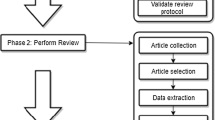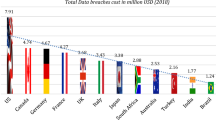Abstract
Situational data integration is often ad hoc, involves active participation of business users, and requires just-in-time treatment. Agility and end-user programming are of importance. The paper presents a spreadsheet-like programming environment called Mashroom, which offers required agility and expressive power to support situational data integration by non-professional users. In Mashroom, various data sources are encapsulated as data services with nested tables as their unified data model both for internal processing and for external uses. Users can operate on the nested tables interactively. Mashroom also supports the basic control flow patterns. The expressive power of Mashroom is analyzed and proved to be richer than N1NF relational algebra. All the XQuery expressions can be mapped to Mashroom operations and formulas. Experiments have revealed the potentials of Mashroom in situational data integration.
Similar content being viewed by others
References
Jhingran A (2006) Enterprise information mashups: integrating information, simply. In: Proceedings of the 32nd international conference on very large databases, Seoul, Korea, pp 3–4
Altinel M, Brown P, Cline S, Kartha R, Louie E, Markl V, Mau L, Ng YH, Simmen D, Singh A (2007) Damia: a data mashup fabric for intranet applications. In: Proceedings of the 33rd international conference on very large databases, Vienna, Austria, pp 1370–1373
Hoang DD, Paik H-y, Benatallah B (2010) An analysis of spreadsheet-based services mashup. In: ADC ’10: Proceedings of the twenty-first Australasian conference on database technologies, pp 141–150
Yahoo Pipes. http://pipes.yahoo.com/pipes/
Di Lorenzo G, Hacid H, Paik H, Benatallah B (2009) Data integration in mashups. SIGMOD Rec 38(1): 59–66
Huynh DF, Miller RC, Karger DR (2008) Potluck: data mash-up tool for casual users. Web Semant Sci Serv Agents World Wide Web 6(4): 274–282
Wang G, Yang S, Han Y (2009) Mashroom: end-user mashup programming using nested tables. In: Proceedings of the 18th international conference on World Wide Web, Madrid, Spain, pp 861–870
Makinouchi A (1977) A consideration on normal form of not-necessarily-normalized relation in the relational data model. In: Proceedings of the third international conference on very large databases, Tokyo, Japan, pp 447–453
Thomas SJ, Fischer PC (1986) Nested relational structures. Adv Comput Res 3(1): 269–307
XQuery 1.0: an XML query language. http://www.w3.org/TR/xquery/
Jin Y, Benatallah B, Casati F, Daniel F (2008) Understanding mashup development. Internet Comput IEEE 12(5): 44–52
Lenzerini M (2002) Data integration: a theoretical perspective. In: Proceedings of the twenty-first ACM SIGMOD-SIGACT-SIGART symposium on principles of database systems (2002), pp 233–246
Smith DC, Cypher A, Tesler L (2000) Programming by example: novice programming comes of age. Commun ACM 43(3): 75–81
Converting Between XML and JSON. http://www.xml.com/pub/a/2006/05/31/converting-between-xml-and-json.html
Chia-Hui C (2006) A survey of Web information extraction systems. IEEE Trans Knowl Data Eng 18(10): 1411–1428
Yang S, Lin H, Yanbo H (2008) Automatic data extraction from template-generated Web pages. Chin J Softw 19(2): 209–223
Yang S, Wang G, Han Y (2009) Grubber: allowing end-users to develop XML-Based wrappers for Web data sources. In: Proceedings of APWeb/WAIM 2009, Suzhou, China, pp 647–652
Colby LS (1990) A recursive algebra for nested relations. Inf Syst 15(5): 567–582
Kepser S (2004) A simple proof for the Turing-completeness of XSLT and XQuery. In: Proceedings of the extreme markup languages
Walmsley P (2007) Expressions: XQuery building blocks. In: XQuery: search across a variety of XML data. O’Reilly Media, Inc., Sebastopol, pp 26–39
Chin JP, Diehl VA, Norman KL (1988) Development of an instrument measuring user satisfaction of the human-computer interface. In: Proceedings of the SIGCHI conference on human factors in computing systems, Washington, DC, pp 213–218
IBM Lotus Greenhouse. https://greenhouse.lotus.com/
Carey M (2006) Data delivery in a service-oriented world: the BEA aquaLogic data services platform. In: Proceedings of the 2006 ACM SIGMOD international conference on management of data. Chicago, IL, USA, pp 695–705
Borkar V (2004) Liquid data for WebLogic: integrating enterprise data and services. In: Proceedings of the 2004 ACM SIGMOD international conference on management of data. Paris, France, pp 917–918
Braga D, Campi A, Ceri S (2005) XQBE (XQuery by example): a visual interface to the standard XML query language. ACM Trans Database Syst 30(2): 398–443
Erwig M (2003) Xing: a visual XML query language. J Vis Lang Comput 14(1): 5–45
Jones MC, Churchill EF, Twidale MB (2008) Mashing up visual languages and web mash-ups. In: Proceedings of the IEEE symposium on visual languages and human-centric computing, pp 143–146
The Ubiquity Project. https://mozillalabs.com/ubiquity/
Liu B, Jagadish H (2009) A spreadsheet algebra for a direct data manipulation query interface. In: Proceedings of the 35th international conference on very large databases, pp 417–428
Obrenović Ž, Gašević D (2008) End-user service computing: spreadsheets as a service composition tool. IEEE Trans Serv Comput 1(4): 229–242
Kongdenfha W, Benatallah B, Vayssi J, Saint-Paul RE, Casati F (2009) Rapid development of spreadsheet-based web mashups. In: Proceedings of the 18th international conference on World Wide Web. Madrid, Spain, pp 851–860
Business Process Execution Language for Web Services. http://www.ibm.com/developerworks/library/specification/ws-bpel/
Abiteboul S, Benjelloun O, Milo T (2008) The active XML project: an overview. VLDB J 17(5): 1019–1040
Pautasso C (2009) Composing RESTful services with JOpera. In: Proceedings of the international conference on software composition 2009, July, vol 5634, Zurich, Switzerland, pp 142–159
Author information
Authors and Affiliations
Corresponding author
Rights and permissions
About this article
Cite this article
Han, Y., Wang, G., Ji, G. et al. Situational data integration with data services and nested table. SOCA 7, 129–150 (2013). https://doi.org/10.1007/s11761-012-0103-5
Received:
Revised:
Accepted:
Published:
Issue Date:
DOI: https://doi.org/10.1007/s11761-012-0103-5




